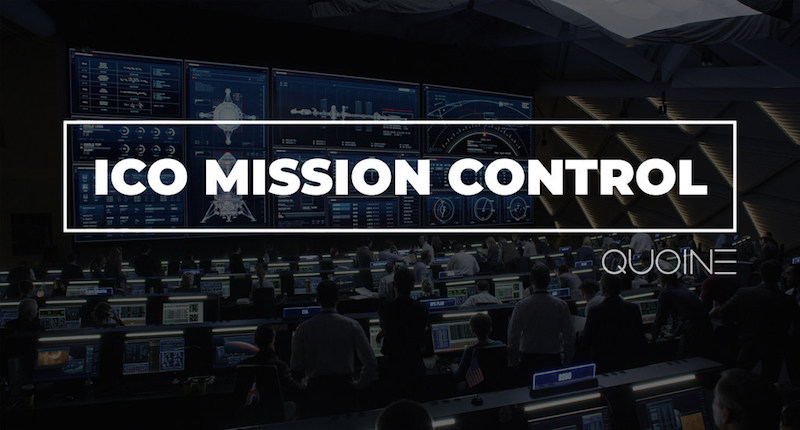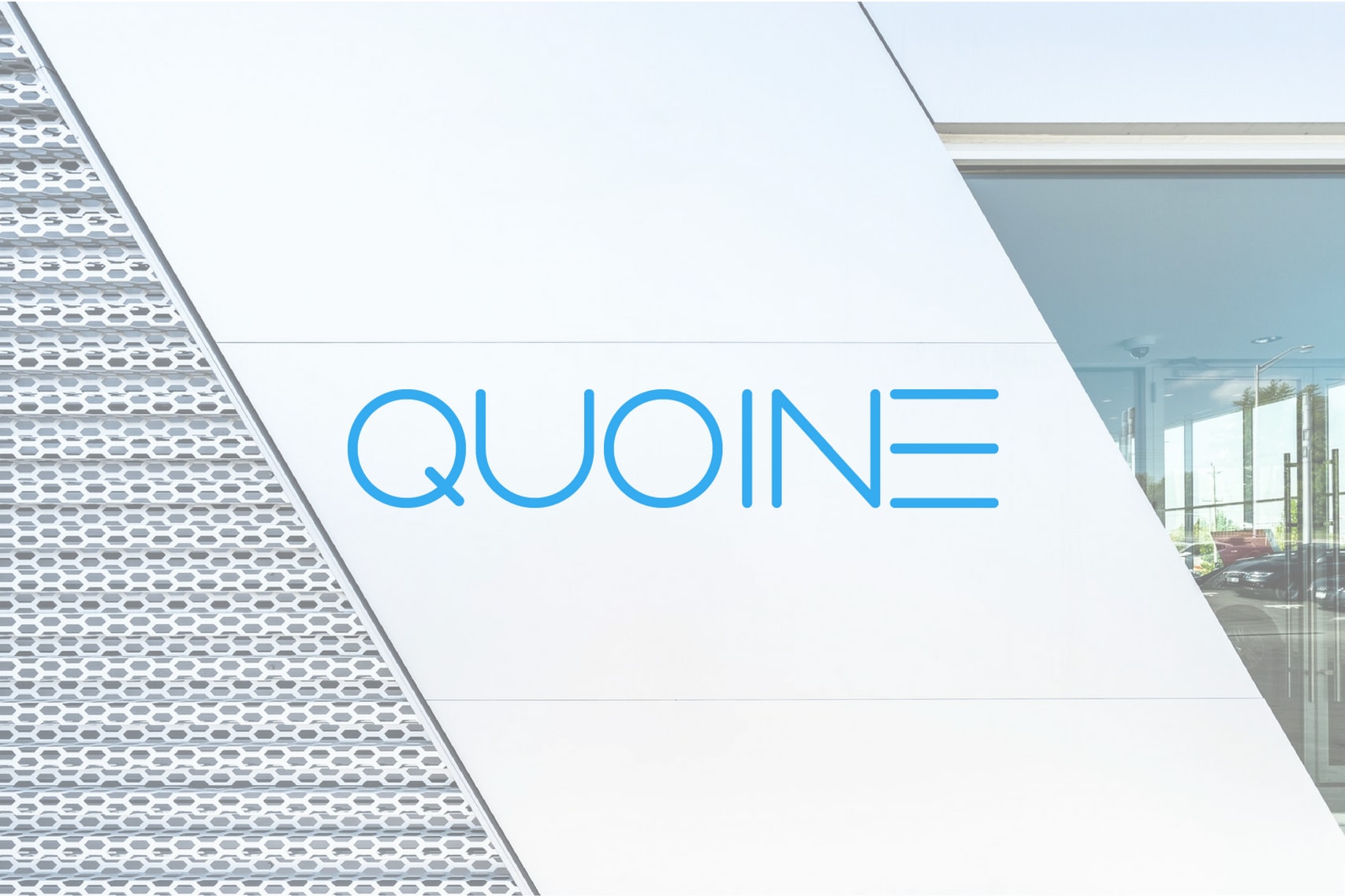On May 6, 2018, the team behind the QASH token (QUOINE) announced a new service called ICO Mission Control that aims to revolutionize the ICO market.
According to the press release:
ICO Mission Control is an end-to-end solution designed to help blockchain project teams conduct an ICO in a flexible, secure, transparent, scalable manner, that adheres to best practices of KYC and AML.
Let’s explore the ICO Mission Control service, how it benefits both token issuers and ICO participants, and where it might be headed in the future, starting with the problem they’re trying to solve.
The Current ICO Market Is a Mess
Raising capital through a token sale is a massive improvement over previous alternatives.
However, the current ICO process still has significant room for improvement. ICO project websites get hacked and funds get stolen with fake deposit addresses. Complex participation requirements (KYC, whitelist, etc.) limit potential buyers. Project teams waste resources fundraising instead of focusing on building or marketing. Most tokens see limited liquidity after the ICO is completed.
The QUOINE team completed their own ICO in November 2017, and during the process they experienced a number of challenges firsthand. This led the QUOINE team to create a new ICO platform that dramatically improves the token sale process for both token issuers and token sale participants.
QUOINE is a Fintech company based in Japan that has been operating since 2014. They currently offer a fiat–crypto exchange (QUOINEX), a fiat–fiat exchange (QRYPTOS), and they recently held a token sale for their own utility token (QASH).
Cue ICO Mission Control

Here’s how it works. A new project decides to launch their ICO on the Mission Control Platform. In just a few minutes, the team can initiate an ICO, allowing market participants to purchase tokens with instant settlement.
Currently, ICO Mission Control is leveraging the QRYPTOS exchange platform for issuing the tokens and trading on the secondary market. In a few months, the QUOINE team will be replacing the QRYPTOS exchange with their long-awaited LIQUID Platform.
The LIQUID platform will merge and replace both QUOINEX and QRYPTOS, which means users can access fiat–crypto trading as well as crypto–crypto trading from a single platform.
LIQUID will also include impressive new features such as a globally sourced liquidity pool (Word Book), Prime Brokerage services, and a much needed UI/UX improvement.
Benefits for Token Issuers
ICO Mission Control will bring plenty of benefits for participating token issuers, which include increased access to potential customers, improved security, limited risk to ever-changing regulations, real-time analytics to improve ICO sales process, and less overall resources spent on fundraising.
Running an ICO is a huge burden for new projects. ICO Mission Control attempts to remedy this by facilitating the entire process. Using QUOINE’s Mission Control platform, new project teams can maximize their chances for a successful ICO while reserving their time for more productive activities (building and marketing).
Built-In Customer Base
With the weight of QRYPTOS behind it, QUOINE’s ICO Mission Control allows token issuers to gain access to 500,000 potential token buyers already registered on the exchange. New clients also receive what is effectively a free landing page (hosted by QRYPTOS.com) when they decide to run their ICO through the QUOINE ecosystem. Here’s an example of a free landing page.
This is huge. Most ICO teams starting from scratch would have to create a website, build hype/traffic, complete a tedious KYC process, and then finally try to sell the token through their site.
Moreover, it’s in the QUOINE team’s best interest to market new ICOs on their platform, which may lead to “free marketing” for these new project teams. For example, QUOINE has been heavily marketing their first ICO Mission control client (VUULR).
Better Security
ICOs get hacked, phished, and disrupted all the time. Instead of wasting resources or taking unnecessary risks, new projects can “outsource their security” to the professionals at QUOINE. That is, instead of a new project team running an ICO through their website, they can leverage the security of the QRYPTO exchange which currently powers the ICO process.
Regulation Compliance
While the regulatory landscape is constantly in flux, the team behind QUOINE prioritizes compliance. They are currently the only exchange regulated by the Japanese government. QUOINE receives regular audits by the Big Four accounting firms. They require all new and existing users to pass up-to-date KYC requirements.
With regulatory agencies such as the United States’ SEC targeting “security token” issuers, QUOINE’s full-compliance strategy might boost its staying power in the near future.
Real-Time Analytical Data
Built into the ICO Mission Control platform are certain analytical tools that allow token issuers to bring more visibility into the sales process. With increased data, the token issuers can be more effective with their marketing/advertising spending to increase the chance of a successful ICO.
Benefit for ICO Participants
Using the QUOINE ICO Mission Control can minimize KYC requirements, simplify the buying process, and give participants access to improved secondary markets.
Currently, participating in an ICO is a tedious process that comes with a high level of risk and uncertainty.
Participants are expected to successfully join a whitelist, complete KYC requirements, and then finally send their precious ETH to some random ERC-20 wallet that hopefully isn’t compromised, trusting that at some point in the future they’ll receive tokens in return.
By participating in an ICO inside the QUOINE ecosystem, the entire process becomes safer and significantly simpler.
Let’s walk through the process step-by-step to illustrate the benefits of using ICO Mission Control.
Step 1: Complete KYC Requirements
Instead of completing unique KYC requirements for every single ICO they want to get involved in, participants will only need to create a single account (with KYC) on the QRYPTOS/LIQUID platform. Once registered, they will be able to participate in any ICO on the platform with the click of a button. This greatly lowers the barrier to entry for participation in token sales.
Step 2: Buy Tokens
ICO Mission Control also facilitates the buying process by creating a user-friendly interface, allowing buyers to select how many tokens from which ICOs they wish to purchase, and which currency they want to use to purchase them.
Instead of waiting weeks or months to receive your tokens, ICOs launched on Mission Control allow participants to receive their tokens immediately after contributing to the ICO. (instant settlement).
Step 3: Access Secondary Markets
All tokens launched via ICO Mission Control will be listed immediately on QRYPTOS/LIQUID, allowing new token holders access to a secondary market where they can buy/sell.
When the LIQUID platform launches, token holders will see a massive increase in liquidity from the World Book. The World Book creates a massive order book by combining liquidity from exchanges around the world.
This is a massive upgrade from most ICOs, where participants must wait weeks or months before their tokens are available. And on top of that, those tokens might not ever be listed on a decent exchange.
Mission Control Hosts Its First ICO: VUULR
On May 9, 2018, VUULR became the first project to list their ICO on the platform.
VUULR is a a global digital marketplace for buying and selling films and TV shows online using blockchain technology.
According to the CEO of VUULR, Ian McKee:
The VUULR’s ICO launch will allow the public to monetize their movie knowledge. Fans will be rewarded with VUU tokens when they contribute their knowledge about films and TV content to the VUULR platform.
The ICO is scheduled to be completed on May 31, 2018. It will be interesting to see how the ICO Mission Control service performs during the maiden voyage!
Here’s a recent interview with Mike Kayamori, CEO of QUOINE, and McKee in which they discuss the VUULR ICO.
Conclusion
With the current ICO process riddled with problems, it’s no surprise to see the QUOINE team becoming an “ICO service provider.”
These ICO service providers offer real value by letting project teams “outsource the heavy lifting” to a professional platform. This frees up the project team’s time and resources, allowing them to focus on more productive activities, such as development and marketing.
While the ICO Mission Control service offered by the QUOINE team is brand new, it presents itself as a very compelling offering.
As regulations surrounding ICOs tighten up, it’s likely that more and more teams will leverage QUOINE’s ICO Mission Control and other services like it.
What do you think? Do you think ICO service providers is the way of the future? And will ICO Mission Control become a popular service?

